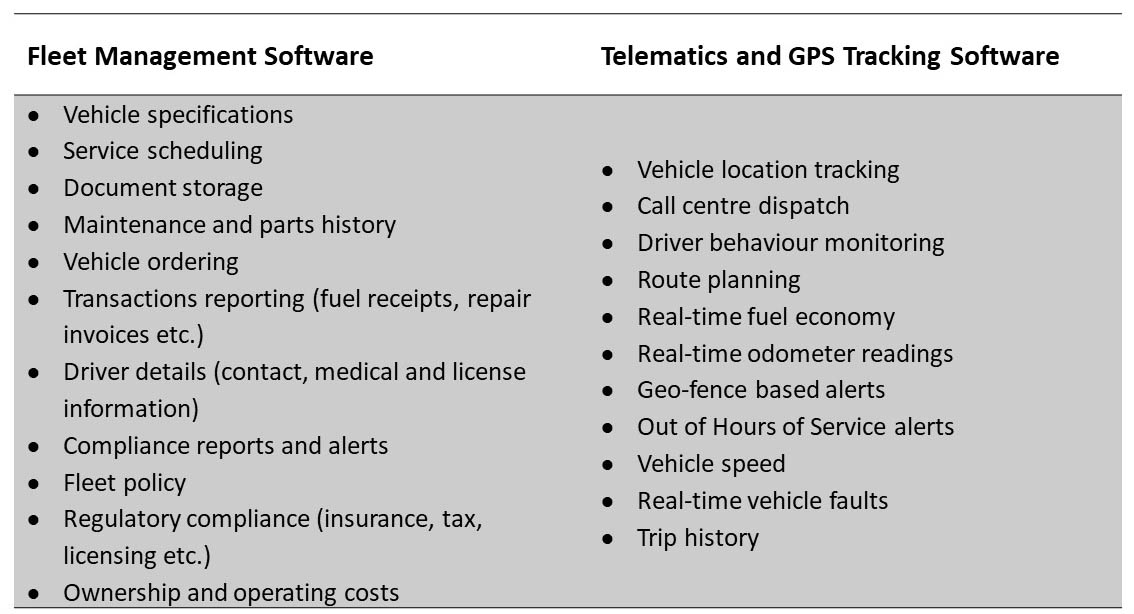Learning Zone
Telematics vs fleet management software: Which solution do you need?
What are the differences between telematics and fleet management software?
With many believing that they are the same, we discuss their very different purposes and which solution you may need to improve your company’s operations.

Businesses are increasingly utilizing both telematics and fleet management software into their fleets. But there can be confusion between the two, with many believing that they carry out a very similar job. This isn’t the case!
To help understand how each can help support fleet management decisions, it helps to understand the capabilities of each in terms of what they are and what they do. This can then help you decide which, if not both, is best suited to your needs.
What is fleet management software?
The definition of fleet management software is, in effect, a large database of information – a place that you can store records of everything and anything to with your fleet. Such records can include:
- Vehicles bought or leased
- Vehicle specifications
- Maintenance schedules
- Parts and service histories
- Drivers and related compliance documents – insurance, licenses and tax
- Fuel transaction records
- Operating expenses
- Financial data
The main purpose of these systems is to reduce the administrative processes involved in managing all fleet life-cycle information. This helps make sense of a fleet in terms of operating costs and total cost of ownership, that you are operating legally, meeting fleet compliance regulations and effectively maintaining assets.
As such, these systems usually have quite comprehensive reporting tools, are able to set alerts and can send emails. They can integrate with third-party systems such as financial and ERP solutions.
Telematics and GPS tracking systems
These systems are more about dots that are moving on a map rather than the rows and columns in a database. They send data from devices (black boxes) installed in the vehicle itself, to primarily track the location and performance of the vehicle, and the behavior of the driver.
Data is transmitted digitally to the company’s servers or through a smartphone app.
GPS vehicle tracking provides only a limited set of data, it can show the real-time position of the vehicle and provide information such as routes taken and the location of a vehicle during a specific moment in time.
Which one is right for my challenges?
Ideally, both! We appreciate that this is not always possible and constraints such as budgets may mean having to choose between the two.
This chart below may help you decide…

Integrations
You may be wondering how these systems work together to improve fleet efficiency and productivity….and it’s important to understand the relationship between the two to gain even further benefits.
By integrating the two systems, the benefits now include:
- Creating a more comprehensive risk analyses by combining driver behavior information with data on accident rates, medical histories and fines
- Ability to attach engine fault codes to work orders to speed up repairs and enhance preventive maintenance
- Safety monitoring
- Elimination of costly idling
- Improved routing
- Streamlined processes by eliminating administrative time
- Improved accuracy by eliminating redundant data entry
Incorporating both telematics and fleet management software creates an opportunity to reduce investment and operating costs across numerous business areas such as fuel purchasing, leasing, maintenance, accident management, accounting, IT and ERP solutions.
Telematics vs fleet management software – which would you choose?
We can now conclude that fleet management software and telematics systems are different, separate solutions. However, when used collectively – and if effectively integrated by a fleet management software provider – they can vastly enhance your fleet management capabilities.
Telematics systems provide your fleet management software with actionable information, which in turn helps to increase the productivity of your fleet. Such combined systems, alongside other integrations, seamlessly and automatically help make your operation more efficient through smart data.
In today’s connected world, integrating telematics systems with your fleet management software can be key to meeting all of your fleet management needs.




